
Reactions from SfN 2017
Spectrum heads to Washington, D.C., to cover the annual Society for Neuroscience conference.
15 November 2017: Day Five

Chiara Manzini
Assistant professor, The George Washington University
Daunting diversity: A lot more autism research at SfN today, with two poster sessions focused on neurodevelopmental disease models and the brain circuits involved in autism. There was also an excellent nanosymposium on the epigenetic mechanisms of intellectual disability.
Overall, what struck me was the diversity of models, circuits and mechanisms — a common thread throughout the meeting. Although the great number of new findings to take in can be overwhelming, I think that rapid progress is being made in understanding autism and cognitive deficits at the genetic, circuit and molecular level.
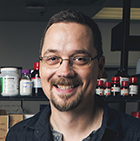
Research associate, Mouse Imaging Center, Hospital for Sick Children
Amazing alternative: I saw a great talk today discussing a technique called diffuse optical tomography (DOT) as an alternative to functional magnetic resonance imaging (fMRI). The main benefits of DOT are that it would allow individuals with severe autism to have a better experience during the brain scanning process, as it is not as sensitive to motion or as claustrophobic as a typical MRI scanner. Adam Eggebrecht of Washington University in St. Louis presented his results from a pilot study using DOT in individuals with autism. He showed a nice replication of his results using fMRI, lending weight to this novel technique’s utility.
This method also allowed for easier examination of social tasks, as the experimenter can face the study participant. This allows for a rigorous assessment of the social dynamics and the corresponding functional brain activity. I was quite impressed with the design and the data shown. I feel it would be a good alternative to typical fMRI studies.
Director, Center for Translational Neuroscience, University of Missouri
Marvelous mice: Today at SFN there continued to be advancement of the theme of the differing effects of autism subtypes. Both Karlie Menzel and Céline Plachez at the Hussman Institute for Autism in Baltimore and Gregory Barnes’ lab at the University of Louisville in Kentucky explored the interaction between the autism-linked semaphorin gene and the GABAergic system in animal models. Gabriella DiCarlo and Mark Wallace at Vanderbilt University described differences in the dopaminergic system in a mouse model of the gene SERT G56A, which has been associated with autism. Understanding these effects may be critical to developing targeted treatments.
Also along these lines, Jacob Ellegood and Jason Lerch at the Mouse Imaging Center in Toronto and Peter Tsai at the University of Texas Southwestern in Dallas systematically compared the differences in cerebellar networks in multiple mouse models of autism. Dalila Pinto of Mount Sinai Medical School, and a graduate student in her lab, Nancy Francoeur, revealed improved approaches for identifying long noncoding RNA that may be involved in autism. This will hopefully expand our understanding of the potential causes of autism beyond traditional genetics studies.
Puzzle piece: Another presentation that caught my eye was from Alan Brown of Columbia University and Andre Sourander of the University of Turku in Finland. In a large Finnish population study, they showed an association between insecticide exposure and autism in males, informing on the environmental piece of the puzzle.

Professor, Autism and Neurodevelopmental Disorders Institute, The George Washington University and Children’s National Health System
I spent my time at the conference today strolling around and reading many wonderful posters while also meeting with several brilliant young investigators. For instance, while meeting with Dorothea Floris, a postdoctoral researcher at the New York University Child Study Center, I learned about her fascinating new results on sex differences in the developmental trajectories of functional connectivity in the brains of girls and boys with autism.
Using the powerful ABIDE I and ABIDE II datasets, she found delays in the development of connectivity patterns in boys with autism emanating from the brain’s right hemisphere posterior superior temporal sulcus and intraparietal lobule. Girls, on the other hand, appear to be relatively protected from these delays. However, girls with autism exhibit other, unique patterns of development in functional connectivity, with relative ‘hyperconnectivity’ between some temporal cortical regions and the posterior cingulate cortex. These findings join a growing body of research showing that brain changes in autism are different in boys and girls.
For more reports from the 2017 Society for Neuroscience annual meeting, please click here.
14 November 2017: Day Four
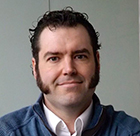
Assistant professor, Oregon Health & Sciences University
Powerful points: Pasco Rakic, professor at Yale University, gave a fascinating and humorous history of neuroscience. Here are my top takeaways from the talk:
- Come to SfN; you might meet interesting people (for instance, your future wife).
- Niels Bohr, who was still pretty smart even though he was a physicist, said, “Opposites are complementary.” In other words, genes and environment interact in neurodevelopment.
- Put your name on your data in case someone else tries to take credit.
- A stable population of neurons may be important to retain acquired experiences.
- Presidential-like quotes: “Read my lips: no new neurons.” “Don’t ask what new neurons can do for you; ask what you can do for old neurons.”
- The Protomap — the molecular map that guides the formation of the cortex — is an “intelligent design.”
- Young people take note: In neuroscience, anything is possible. See you next year.
Director, Center for Translational Neuroscience, University of Missouri
Brain boost: Several investigators at SfN today described interesting aspects of the pathophysiology of autism in the brain. One presentation by Krishna Subramanian, a postdoctoral research fellow in Gene Blatt’s lab, identified alterations in dopamine in postmortem brains. Another presentation by the University of Nevada’s Jeffrey Hutsler and a graduate student in his lab, Marena Manierka, described alterations in microglial populations in superior cortical layers. Betty Diamond’s lab at the Feinstein Institute for Medical Research explored maternal antibodies to fetal brain tissue that are associated with autism. They disrupted the transfer of one of them across the placenta in an animal model with a decoy antigen that bound to the antibody but could not cross the placenta, and so could not affect the pups.
Environment effect: Michelle Kielhold, a student in Stanford associate professor Theo Palmer’s lab, examined gene-environment interactions. She looked at maternal immune activation in rodent mothers with alterations in the autism-linked gene MET, and the effects in their pups. The team pointed out that gene-environment interactions in the mothers can be important for their impact on the development of the pups.
There were also several researchers reporting on intervention studies in animal models of fragile X syndrome. We are making steady progress in systematically tackling each etiological subtype of autism.

Postdoctoral researcher, LaSalle Laboratory, University of California, Davis
Rett revelations: An exciting series of talks in the session “Advances in Understanding Rett Syndrome Pathophysiology” this morning described novel mechanisms, models and treatment strategies for Rett syndrome.
Some of the highlights included work from Serena Dudek’s lab at the National Institute for Environmental Health Sciences, which showed that in a mouse model of Rett, perineuronal nets regulate the premature closing of critical period plasticity in CA2 of the hippocampus. Two further talks detailed using RNA Seq to identify novel biology and molecular targets for Rett therapies.
Additionally, Rocco Gogliotti, research instructor at Vanderbilt University, identified muscarinic acetylcholine receptors as a novel therapeutic target for Rett in mice. Harvard University’s William Renthal used single-cell sequencing to profile brain tissue taken from people with Rett syndrome and mouse models of the condition. With a clever usage of single nucleotide variations in the human and mouse tissues, he was able to separately profile MECP2-positive and -negative cells from the same brain. The overall findings indicate that cells lacking MECP2 show dysregulation of long genes with higher levels of methylation.
Wendy Gold, senior research fellow at the University of Sydney, also showed some interesting data on deficits in mitochondrial trafficking in neurons from Rett models. Overall, this session provided novel insights into a wide range of mechanisms disrupted in Rett syndrome and some exciting new therapeutic targets for clinical development.
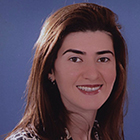
Assistant professor, University of Texas Southwestern
Exciting epigenetics: The poster session this afternoon was focused on epigenetics. One poster, from Andrew Feinberg, professor at Johns Hopkins University, caught my attention. It showed a map of the methylome across four brain regions — prefrontal cortex BA9, anterior cingulate cortex BA24, hippocampus and nucleus accumbens — using postmortem tissue from six individuals. The researchers showed that the methylation profiles were different between these brain regions and that these differences were masked when using bulk tissue. Using a technique called ATAC-Seq, they found that there were differences between the brain regions in the accessibility of DNA at various places in the genome.
These differences inversely correlated with the methylation profile: The more accessible an area, the less that area is methylated. What was interesting is that they matched these differentially methylated regions (DMRs) with heritability in common traits, specifically addictive behavior, schizophrenia and neuroticism. This suggests that these DMRs are particularly sensitive to disruption, and that common traits may be mediated through brain-region-specific epigenetics.
Genetics to the fore: I was excited to see Steve Hyman’s lecture today on the complex genetics of schizophrenia. It, along with Huda Zoghbi’s lecture yesterday, brought genetics to the forefront. Hyman, a professor at the Broad Institute, covered work on common and rare variants in schizophrenia from the Psychiatric Genomics Consortium. He stressed the need for large sample sizes to detect the small-effect variants in mental illness, and the importance of population diversity in study designs. To this effect, the goal of the Stanley Center Global Collections initiative is to collect 250,000 samples of DNA from people with schizophrenia worldwide.
Hyman noted that even though the field of psychiatric genetics is doing well at identifying genes associated with specific conditions, biological insights are lagging behind. One possible reason for this, he says, is that the identified genes fall into two categories: ones with very rare variants; or ones with common variants where the phenotype depends on the genetic background. Both categories are hard to model through classical approaches meant for genes with large effects on their own. He proposed the use of human organoids as models for studying these conditions but also said that these models need to be thoroughly characterized. He ended by touching on new functional assays under development to study the effects of specific variants. One of these is the “massively mosaic” experimental system: plating neurons from hundreds of individuals in the same dish and characterizing gene expression of single neurons through Drop-Seq. The system enables scientists to match the genotype to phenotype and conduct high-throughput experiments in a controlled environment.

Associate professor, Scripps Research Institute
CHD8, a high-confidence autism risk gene that is associated with macrocephaly (a large head), was the focus of two interesting posters this afternoon. Shaun Hurley, graduate student in Albert Basson’s lab at King’s College London, is examining the effect of CHD8 dosage on brain structure and behavior. He is using mice that either lack one functional copy of CHD8 (haploinsufficient) or have two copies of a mutant version of CHD8 that leaves partial function intact (hypomorphic). The latter mice have approximately 10-20% less CHD8 than the former.
While the two models display largely similar behavioral phenotypes, mice that have the hypomorphic CHD8 mutation display a considerably greater brain volume, measured with magnetic resonance imaging (MRI), than mice that are haploinsufficient for CHD8.
While the two models display largely similar behavioral phenotypes, mice that have the mutant CHD8 display a considerably greater brain volume, measured with magnetic resonance imaging (MRI), than mice lacking one functional copy of CHD8. This indicates that developmentally regulated brain growth is highly sensitive to CHD8 levels. Hurley also used resting-state functional MRI in mice lacking one functional copy of CHD8 and found evidence of increased cortical-hippocampal connectivity. Similarly, Alex Nord, assistant professor at the University of California, Davis, showed that CHD8 binding is enriched in the promoters of genes associated with RNA processing and chromatin organization. Relatedly, mice lacking one good copy of CHD8 display altered RNA splicing during brain development, along with increased neural progenitor cell proliferation and brain size. These studies represent exciting progress toward understanding the relationship between CHD8 mutations and autism-relevant phenotypes at the levels of genomics, neurobiology and behavior.
For more reports from the 2017 Society for Neuroscience annual meeting, please click here.
13 November 2017: Day Three

Professor of psychiatry and behavioral research at the MIND Institute at the University of California
Marvelous mice: Two interesting posters highlighted novel aspects of mouse models. Maria Luisa Scattoni, a researcher at the Istituto Superiore di Sanità in Rome, discovered fewer ultrasonic vocalizations in mice missing neurexin-1 alpha from 4 to 12 days after birth. Remarkably, call category complexity was dramatically reduced in these mice, with 73 percent of calls restricted to short emissions. Scattoni speculated that this early developmental stage in mice corresponds to 6- to 9-month-old infants. Babbling complexity is often lower in infants at this age who subsequently receive an autism diagnosis.
Marco Nigro, a postdoctoral fellow in Francesco Papaleo’s lab at the Istituto Italiano di Tecnologia in Genova, Italy, recorded from the prefrontal cortex with multi-electrode arrays during social interactions in mice missing dysbindin-1, a gene primarily associated with schizophrenia. They saw that activation of neuronal firing was less elevated in mice lacking one copy of this gene than in controls. They also found that oxytocin treatment increases male-male social interactions and activity in the prefrontal cortex.
The wealth of autism presentations at SfN 2017 is impressive.

Assistant professor of neuroscience in psychiatry at Weill Cornell Medical College in New York
Social surprise: Claire Weichselbaum, a doctoral student in John Constantino’s and Joe Dougherty’s labs at Washington University in St. Louis, presented a poster on testing a new social operant conditioning paradigm to study social motivation in mouse models. Instead of the classic sucrose reward, they used a live mouse to demonstrate changes in learning behavior in the autism mice.
Interestingly, the side chamber that housed the novel mouse for the social component of the task was made by a 3-D printer. I thought the printed chamber was a clever and monetarily cheap way to adapt the operant conditioning chamber to fit the needs of the study. It was exciting to see how new tools like 3-D printing are being translated into behavior paradigms.

Postdoctoral researcher, LaSalle Laboratory, University of California, Davis
Rewarding work: Claire Weichselbaum, a doctoral student in John Constantino’s and Joe Dougherty’s labs at Washington University in St Louis, presented preliminary work developing a novel rodent behavior paradigm for testing social rewards. Her unique 3-D printed apparatus attaches to a standard operant training box, allowing test mice to nose-poke for access to a novel mouse. In an elegant set of behavior experiments she demonstrated that control mice will work for access to the novel mouse, similar to previous findings for food rewards. This task could be used to examine the rewarding aspects of social interaction in autism mouse models.
Director, Center for Translational Neuroscience, University of Missouri
Powerful posters: While there were few autism-specific talks today, there was significant work of interest at the poster sessions. This morning, Melissa Bauman, associate professor at the MIND Institute at the University of California, Davis, and Karen Jones, a postdoctoral fellow in Judy Van de Water’s lab at the MIND Institute, showed some of their results. They have been able to replicate the maternal antibody model of autism in the rat model, which will allow for further investigation of the antibody’s mechanism.
There were also several posters on the effects of various genetic rodent models on neural circuitry. I will highlight one, though. Jason Lunden, a postdoctoral researcher in Emanuel DiCicco-Bloom’s lab at Rutgers Robert Wood Johnson Medical School, found significant differences in the noradrenergic system in the engrailed-2 mouse model. We typically don’t think about this neurotransmitter system in autism, but it is important to reconsider when looking at how different subtypes of autism may show effects in different systems.
In the afternoon, B. Blair Braden, assistant professor at Arizona State University, showed faster cortical thinning with age in autism, a finding that is critical for our understanding aging in autism. At the other end of the spectrum, Shafali Jeste, associate professor at the University of California, Los Angeles, found early electroencephalography markers in children at risk for autism that will be followed clinically for their implications for diagnosis.

Associate professor, Yale University
Connecting circuits: One thing I’ve been hearing across the field recently is the need for linking local and large-scale neural circuit dysfunction to disease phenotypes. There were exciting talks by Michela Fagiolini, assistant professor at Harvard University, and Ben Philpot, professor at the University of North Carolina, on Saturday. Posters from several other labs yesterday and today also incorporated powerful examples of approaches where a deep understanding of cellular function and dysfunction, along with the contributions of cellular disruption to large-scale circuit activity, has led to a profound advance in our understanding of phenotypes in both rodent models and people. Work on syndromic models, like those for Angelman and Rett syndromes, has made huge strides in generating direct, clear links from rodent models to human conditions, and this part of the field has really come into its own.
Assistant professor, Department of Human Genetics Research and Molecular & Behavioral Neuroscience Institute, University of Michigan
Pioneering professor: Huda Zoghbi, professor of molecular and human genetics at Baylor College of Medicine, gave an inspirational Albert and Ellen Grass Lecture on 25 years of genetic and mechanistic discoveries in brain disorders, including Rett syndrome, autism and spinocerebellar ataxia type 1. Zoghbi’s pioneering cross-species genetic studies showed that mice can be excellent disease models, and with rigorous evaluation, their study can inform clinical medicine. Her work highlighted how subtle alterations in protein levels can cause synaptic dysfunction in neuropsychiatric disorders or lead to protein accumulation in neurodegenerative diseases. These modest changes represent an opportunity for therapeutics. Zoghbi’s team is using unbiased screens to identify druggable targets that can be leveraged to normalize these changes in protein levels.
Graduate student, Rutgers University
Today, Huda Zoghbi, of Baylor College of Medicine, presented fascinating and rigorous work from her lab that demonstrated the incredible sensitivity of neurons to alterations in protein levels. Even mild increases or decreases in autism-relevant proteins such as MECP2 and SHANK3 could alter the function and development of the brain. Zoghbi emphasized the importance of studying molecules that regulate the expression and levels of these proteins.
This approach can allow us to form a better understanding of the different subtypes of autism. Indeed, many cases are of unknown genetic origin, so the approach of studying regulation could help us to uncover mechanisms by which the condition occurs. In fact, existing genetic data from individuals with autism could be mined to discover molecules that contribute to the condition. More importantly, by finding different regulatory molecules, we may also find targets for therapies that can be used in combination to manage and treat many neuropsychiatric conditions.

Assistant Professor, The George Washington University
Exciting environment: Learned a lot today about nongenetic models of autism in the morning poster sessions, with several presentations detailing animal models and environmental exposures. One resource I spotted that looks useful for evaluating different models and making sense of the literature is AutDB, a database that uses a bioinformatic approach to evaluate and rank different models of early-life exposures, such as maternal immune activation or responses to drugs for epilepsy or depression. Through this publicly available resource, researchers can compare different mouse models and define the best time for developmental exposure in order to study how these may shape autism.
In the afternoon, Steve Siegelbaum’s group at Columbia University had a great series of posters dissecting different aspects of the contribution of the CA2 region of the hippocampus to social memory and social aggression, and further stressing the pivotal role of this brain region in social behaviors. In particular, Macayla Donegan, a graduate student in Siegelbaum’s lab, identified unstable firing in CA2 fields in a mouse model of 22q11 deletion syndrome during social tasks, suggesting that this disruption may lead to the inability to identify a familiar or stranger mouse in a social context.
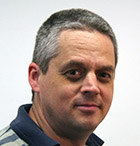
Associate research professor of pharmacology and physiology, The George Washington University
Clever characteristics: One small but clever study gave some food for thought. In this study, the researchers used a robust and renewable resource — undergraduate students — to look for correlations between ear shapes and measures of cognitive and psychiatric performance in teenagers. They found strong linkages between certain ear shapes and measures such as SAT scores, as well as other behavioral measures, such as a lack of close friends, which are often associated with an increased risk for psychiatric conditions.
Although it may seem odd at first to link such disparate measures together, the face and brain rely on many of the same developmental mechanisms, and thus anything that compromises brain development will often leave telltale signs in facial development. This is readily apparent in the autism field, where most individuals with genetic syndromes associated with autism have specific facial characteristics. But above all, I was impressed that such a straightforward study — one that could be repeated by anyone with an iPhone, a stack of questionnaires and a lot of undergraduates — was able to show such a strong association.
For more reports from the 2017 Society for Neuroscience annual meeting, please click here.
12 November 2017: Day Two

Professor, Autism and Neurodevelopmental Disorders Institute, George Washington University and Children’s National Health System
Divided attention: Let me begin by thanking the many veterans whose service helped make it possible for us to spend this Veterans Day weekend at SfN, enjoying scientific and personal freedom in our nation’s capital. And welcome to my new hometown. My highlight reel today featured a ‘divided attention task’ involving two great minisymposia.
Back to basics: One session, called ‘Emerging Mechanisms Underlying Dynamics of GABAergic Synapses,’ reviewed the latest findings concerning inhibition by GABA as a mechanism of plasticity, or cells’ ability to change. The findings demonstrated that this neurotransmitter system is important for shaping development, serving as a tool the brain uses to respond to changing environmental inputs and novel experiences. When the organism (these findings were in animals, but they presumably apply to people as well) meets new sets of expectations, GABA appears to lead the way in reconfiguring the balance of excitation and inhibition in the brain, allowing it to achieve a new steady state. This is an important source of learning and development. I would wager that this line of investigation holds many exciting leads for the development of drugs that could improve social learning.
Similarly, I was riveted by the groundbreaking work presented at ‘Neuroimmune Interactions: A Status Change.’ Scientists reviewed some of the most exciting autism-relevant discoveries in the field of neuroimmunology of the past year, and presented evidence concerning the immune system’s influence on the brain.
Each of these minisymposia highlighted the value of basic neuroscience research for understanding autism. It certainly beats watching Sunday football.
David Beversdorf
Director, Center for Translational Neuroscience, University of Missouri
Stem cell stunners: Today there were a couple of nice examples of what can be done with induced pluripotent stem cells to better understand autism.
Carol Marchetto, a senior research scientist in Fred Gage’s lab at the Salk Institute, presented her work. She induced neural progenitor cells specifically from people with autism who also have enlarged heads, or macrocephaly. This is a clever research strategy, because it explores not just an important subtype of autism but also a biologically specific subtype. The induced cells have a shortened cell cycle, which is consistent with the observed overgrowth. In fact, this proliferation correlates with brain volume. The researchers observed abnormalities in the spiking activity of the neurons and in the generation of synapses. Administration of insulin growth factor-1 reversed these effects. Future studies may be able to explore this as a treatment for the subtype of autism with macrocephaly.
Patrícia Beltrão Braga, professor of genetics and embryology at the University of São Paulo in Brazil, showed that when astrocytes induced from controls are placed with neurons induced from a person with idiopathic autism, it reverses the atypical morphology and synapse formation observed in the autism neurons. A very intriguing finding indeed.

Postdoctoral researcher, LaSalle Laboratory, University of California, Davis
Dietary distinction: The ketogenic diet has been used clinically to control seizures for decades, but the mechanism by which it works was largely unknown. At the same time, adhering to the strict diet is difficult, especially for children on the spectrum. Elaine Hsiao, assistant professor at the University of California, Los Angeles, presented data this afternoon demonstrating that the gut microbiome may be the key to how the diet works.
In an elegant set of experiments, her lab found that in mice, the ketogenic diet alters the prevalence of several specific microbes in the gut. These microbes interact with each other to alter metabolism and, ultimately, the balance of the neurotransmitters GABA and glutamate in the brain. This work provides new insight into the mechanisms underlying the ketogenic diet’s impact on seizures, and may provide novel therapeutic pathways for mimicking the diet’s benefits by altering the microbiome.

Assistant professor, Department of Human Genetics Research and Molecular & Behavioral Neuroscience Institute, University of Michigan
Connecting contributions: A series of beautiful posters in connectomics highlighted the contribution of new technologies to mapping neuronal connections. With advances in high-throughput imaging, brain clearing, three-dimensional registration and other techniques, the whole mouse brain can now be imaged at the resolution of single neurons and single axons — even single boutons — illuminating neural circuits with unprecedented precision, and revealing new and rare connections.
In the next few years, these and related efforts will enable whole brain connectome mapping at high precision and set the stage for studying altered connectivity in conditions known to affect neural circuits.
For more reports from the 2017 Society for Neuroscience annual meeting, please click here.
11 November 2017: Day One

Research associate, Mouse Imaging Center, Hospital for Sick Children
Sensory surprise: Lauren Orefice, a postdoctoral fellow in David Ginty’s lab at Harvard University, presented her work examining the sensorimotor system in autism. She looked at four different mouse models — FMR1, GABRB3, MECP2 and SHANK3 — to investigate their hypersensitivity. To my surprise, she found that all four sets of mice show a hypersensitivity to light touch (a puff of air on their fur).
She also showed different methods that were able to rescue the deficits by directly targeting peripheral sensory neurons. One method used a genetic rescue with the MECP2 model, which she used to turn MECP2 back on in the peripheral sensory neurons. This rescued the anxiety phenotype.
The other method used a viral vector to increase GABRB3 in the peripheral sensory neurons, which actually negatively correlated with tactile responsiveness. I was intrigued by this study, as it shows that the peripheral nervous system may be playing an active role in a subset of people with autism.

Assistant professor of pharmacology and physiology, and integrative systems biology, George Washington University
Connecting circuits: Great kickoff for autism research at the Society for Neuroscience meeting, with a mini-symposium led by Michela Fagiolini, assistant professor of neurology at Harvard University. The session focused on identifying circuits that are disrupted in neurodevelopmental disorders to develop ideas for treatment. Each talk focused on a variety of neuronal circuits in several models of single-gene mutations leading to syndromic autism, showing how different brain regions may be connected and involved in the emergence of autism features.
Plural pathways: Some surprising data came from outside the cerebral cortex. Lauren Orefice presented fascinating work about how the loss of function of four autism genes can act directly in sensory neurons to alter somato-sensation in development. This appears to lead to both altered sensitivity to touch and anxiety-like behaviors in adult mice. This shows how autism genes can act at multiple neuronal sites to lead to the condition.

Associate research professor of pharmacology and physiology, George Washington University
Cortical identities: There was a nice group of posters from researchers at the Allen Institute for Brain Science this afternoon. One was of particular interest, which described their efforts using a technique called single-cell RNA-Seq in order to get transcriptional profiles of mouse cortical neurons.
It’s been known for more than 100 years — since the work of the father of modern neuroscience, Santiago Ramon y Cajal — that there are hundreds of distinct cell types in the cortex. We have ways to identify a handful of them, but we really don’t know the exact function for many of them. The Allen Institute researchers were able to show in their work a few key distinctions between these cell types. For example, a distinct developmental origin for inhibitory neurons is evident. The inhibitory neurons that originate in the caudal part of the brain have distinct transcriptional signatures from the inhibitory neurons that arise in the anterior of the brain. The researchers also found numerous identifying signatures for excitatory neurons and astrocytes. This is one big step closer to figuring out who’s who in the cortex.
Further work will be needed to figure out which signatures map to which neurons, but this is a start to making tools that allow for identifying and manipulating specific groups of neurons in the cortex.
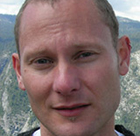
Reader in developmental and stem cell biology, King’s College London
Purkinje puzzle: I went to a talk by Peter Tsai, an assistant professor at University of Texas Southwestern, on cerebellar-mediated autism behaviors. In a 2012 paper with Mustafa Sahin, a professor at Children’s Hospital Boston, his team reported the surprising finding that conditional deletion of the gene TSC1 only in Purkinje neurons of the cerebellar cortex is sufficient to cause autism-like behaviors in mice.
Today, Tsai showed that selective inhibition of these neurons in only a single lobule on the right-hand side of the cerebellar hemisphere, called Crus 1, is sufficient to cause social deficits in the mouse. Even more interesting is the fact that inactivation of the same cells on the left-hand side has no effect.
What got them to focus on this specific area? Together with Jacob Ellegood and Jason Lerch in Toronto, he and his team found that the right Crus 1 is smaller in their original Purkinje-neuron-specific TSC1 mutant mice. This suggests that subtle morphological differences in the brain could predict important functional roles. He also showed that stimulating right-hand Crus 1 cells in the conditional TSC1 mutant could rescue social deficits, but not repetitive behavior and flexibility. Finally, the researchers have started using their models to identify potential regions in the parietal cortex that may be connected to this region in the cerebellum. The enigmatic role of the cerebellum in autism just got a lot more interesting.
For more reports from the 2017 Society for Neuroscience annual meeting, please click here.
9 November 2017: Heading to Washington, D.C.
On Saturday, the 47th annual meeting of the Society for Neuroscience (SfN) gets underway at the Walter E. Washington Convention Center in Washington, D.C. More than 30,000 neuroscientists from across the globe are expected to attend.
It can be a lot to take in over five days. Spectrum’s reporters will be on the ground, bringing you the most newsworthy autism research findings. I’ll also be updating this blog daily with attendees’ reactions to conference presentations and posters.
Our daily news coverage is available here. Receive a roundup each day by subscribing to our newsletter, or stay up to the minute on the latest news by following Spectrum on social media. We’ll be posting on Facebook and live tweeting from the conference.
We invite you to share your expertise with the autism research community at two Spectrum events at the meeting.
At noon on Sunday, 12 November, join us at All-Purpose Pizzeria to help build the Spectrum wiki, a glossary of autism terms that is written and edited by researchers. You’ll be honing your science-communication skills by writing an entry. You’ll also receive an exclusive tote bag featuring one of Spectrum’s illustrations — and a free lunch.
We also invite you to participate in a live Twitter chat about the autism research presented at the conference at noon on Monday, 13 November. Meet us online or in person for lunch at Acadiana. We will be tweeting questions and moderating the chat using the handle @Spectrum and the hashtag #SFNChat.
Like us on Facebook » | Follow us on Twitter @Spectrum» | Join our newsletter
For more reports from the 2017 Society for Neuroscience annual meeting, please click here.
Recommended reading

New organoid atlas unveils four neurodevelopmental signatures
Explore more from The Transmitter
Snoozing dragons stir up ancient evidence of sleep’s dual nature

The Transmitter’s most-read neuroscience book excerpts of 2025



